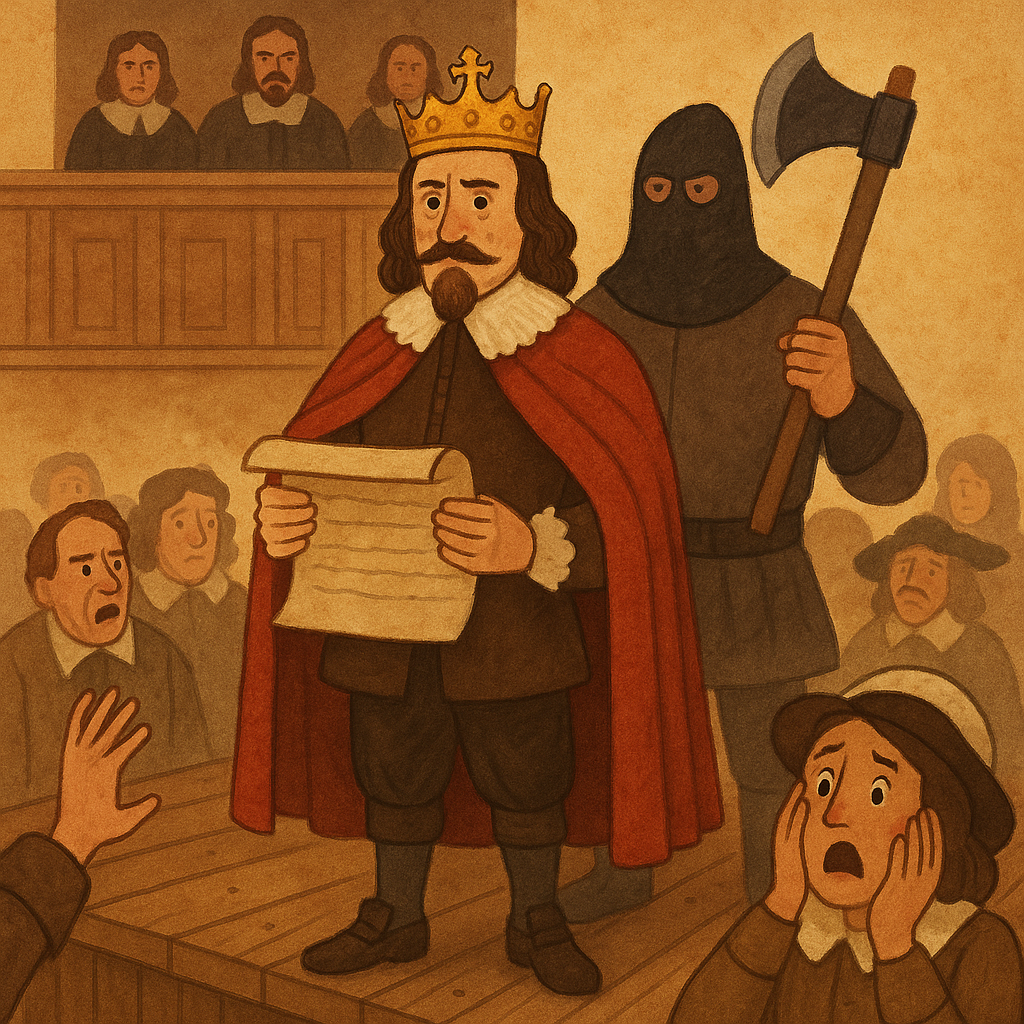Lesson 3: The Age of Revolution (Enlightenment and Revolution)
Trouble in England: Kings vs. Parliament
In the 1600s, England had big problems. Kings wanted all the power. But Parliament (a group of lawmakers) wanted to help make decisions too.
📖 Story: King Charles I didn’t want to share power. He ignored Parliament and tried to rule alone. People were angry. A war started! In the end, Charles I was put on trial and executed in 1649 — a shocking event! 😲
Later, the king’s son, Charles II, came back to rule. But now, Parliament had more power.
In 1689, England passed the English Bill of Rights 📝. This gave people more freedom, like the right to speak freely and a fair trial. Kings could no longer rule without Parliament. It was a big step toward democracy!
A New Nation: Democracy in America
In the 1700s, people in the 13 American Colonies were tired of British rule. They paid taxes but had no say in the government. They said, “No taxation without representation!”
📖 Story: In 1776, Thomas Jefferson wrote the Declaration of Independence. He used Enlightenment ideas, like those of John Locke. He said that all men have rights, and people can choose their leaders.
The American Revolution began. After fighting the British, the colonies became the United States of America. They created a Constitution with a government where power is shared and people vote.
It was a new kind of country — built on freedom, rights, and Enlightenment ideas.
The French Revolution: Liberty, Equality, Fraternity
France had many problems in the 1700s. Most people were poor. But the king, Louis XVI, and the nobles were rich and powerful. People wanted change.
📖 Story: In 1789, the people of Paris stormed a prison called the Bastille 🏰. It became a symbol of fighting against unfair rule. This started the French Revolution.
People shouted: “Liberty! Equality! Fraternity!” (Freedom, equality, and brotherhood).
The king was later executed. France tried to build a republic, where the people ruled. It was a time of big ideas but also violence and fear, like during the Reign of Terror, when many were sent to the guillotine.
Still, the Revolution spread Enlightenment ideas — that all people should have rights, not just kings and nobles.
